Animals and fantastic places in the museums of Italy: Lombardy
Today begins our journey that will take you on a discovery of the animals, creatures and fantastic characters depicted in the works of art in museums in all regions of Italy, from North to South, including painting, sculpture and art objects, as well as some of the fantastic places we will encounter throughout the country. A project that Finestre Sull’Arte undertakes in collaboration with the Ministry of Culture that aims to make you visit cultural places in an original and fun way, safely, with the family and in the company of your children who will compete to be the first to unearth fantastic creatures from the world of mythology and literature. We start in Lombardy with ten fantastic works and places that you can find and visit in different cities, from Milan to Mantua, from Pavia to Desenzano del Garda, from Vigevano to the province of Sondrio. So are you ready for this ... fantastic journey? Let’s get going.
1. The Devil. Altarpiece of the Three Archangels by Marco d’Oggiono, Pinacoteca di Brera (Milan).
A devil equipped with horns, black bat wings and raptor-like lower legs is plunging headfirst into a large chasm that has opened in the ground; he already has his left arm inside and his face is not the happiest. It is the devil or Satan who is defeated by the warrior archangel Michael, as we read in the passage from Revelation: in fact, Michael, in the center of the composition, hovers in the sky supported by large wings and holds in his right hand the long sharp sword with which he has just defeated the devil, the symbol of evil. In religious-themed works, the devil is an evil and destructive entity who is always defeated by angels or divine entities, signifying good overcoming evil. Standing on either side of the scene are the archangels Gabriel and Raphael. The work was created by Marco d’Oggiono, a pupil of Leonardo da Vinci (in fact, the somatic features and grace of the angelic creatures are Leonardesque), in about 1516 and is now in the Brera Art Gallery. Here it arrived in 1806 from the church of the Augustinian nuns of Santa Marta in Milan, whose links with the spiritual current inspired by Amedeo Mendez da Silva’sApocalypsis Nova, rich in prophetic and visionary content, are well known.

2. Satyrs. Venus and Cupid with Two Satyrs by Simone Peterzano, Pinacoteca di Brera (Milan).
Immersed in a landscape in the shade of trees, the completely nude goddess Venus is sleeping in a very sensual pose on pink and blue draperies; she has her son Cupid with bow and arrows near her, who is observing the scene. In fact, the goddess has been found by two mischievous satyrs disturbing her sleep and attempting to undermine her: one looks at her with a mischievous face and removes a golden drapery, the other handling near Venus’s feet some vine, a symbol attributed to the god Bacchus and his followers, namely the satyrs. Instead, next to the vine is a pomegranate, an attribute associated with Venus that indicates fertility and prosperity. The satyr is a woodland being drawn from the Greco-Roman mythological world represented in human form with pointed ears, tail and hooves of a horse or goat. Preserved at the Pinacoteca di Brera, the painting was executed by Simone Peterzano, a pupil of Titian and a master of Caravaggio active mainly in Milan, in about 1570; the work, characterized by a strong erotic charge intended to celebrate the generative forces of nature and the pleasure of carnal love, constitutes one of the few paintings with a profane theme completed by the artist and represents a detailed still life piece.
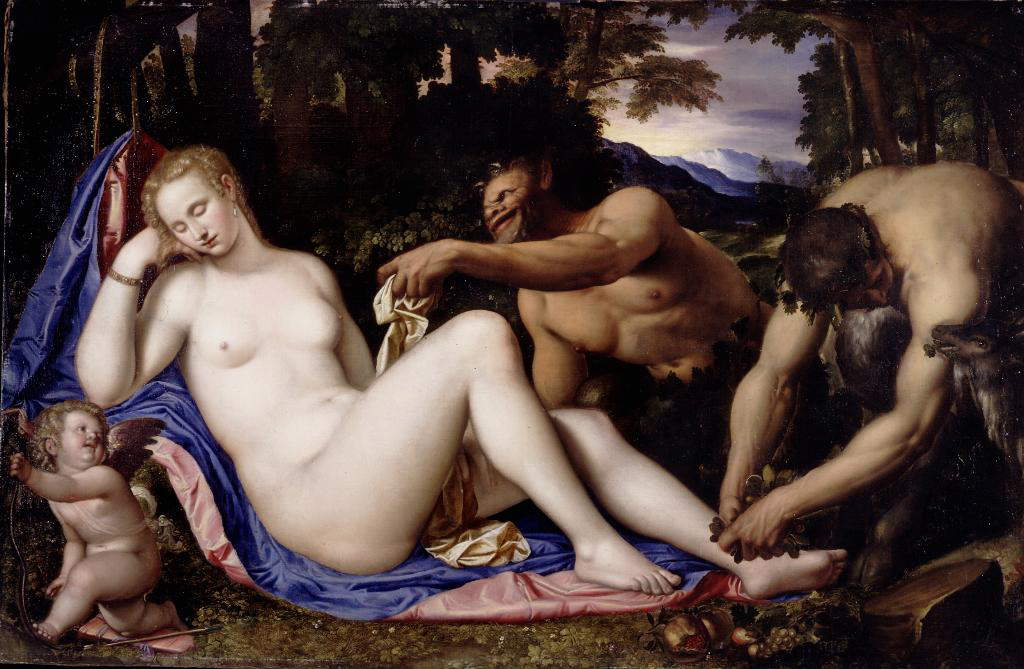
3. The Devil. Le demon du jeu by Gino Severini, Pinacoteca di Brera (Milan).
A devil equipped with a long pitchfork with horns, rosy wings, donkey tail, and hooves flutters with a malignant and spiteful face in the sky; below him a game of cards is being played by three pierrot sitting in a circle, two with the mask still on their faces and one bare-faced who has placed the mask on the ground. In the middle is an architectural structure reminiscent of the classical world. This is the scene depicted by Gino Severini in 1928 in the panel entitled Le demon du jeu, now housed at the Pinacoteca di Brera in Milan. The panel, along with Le coup de foudre, belonged to the series of decorative panels commissioned in that year from the artist by Léonce Rosenberg, a Parisian art dealer who wanted to decorate a room in his new representative apartment to make it a temple of taste, permanently exhibiting the major artists associated with the Galérie de l’effort moderne that he opened in 1918. The commission called for the creation of a cycle of six canvases depicting classical landscapes inhabited by mythological characters, but Severini proposed replacing these with masks of Italian comedy set in Italian-style caprices in which antique, still life, Pompeian red and the theatricality of deus ex machina are combined.
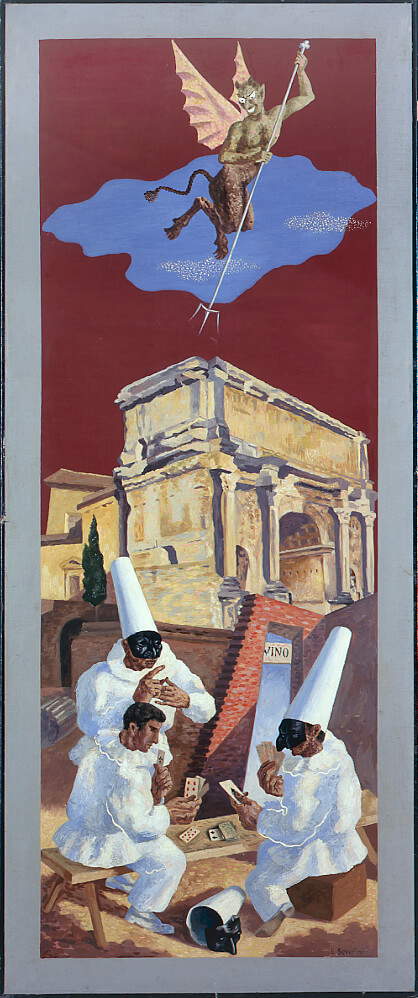
4. Animals and fantastic creatures. Grotesques of the Ducal Palace (Mantua).
Mantua’s Ducal Palace, which stretches across the city’s main square, Piazza Sordello, was the official residence of the Gonzaga family, among the most powerful lords of the Italian Renaissance. Its rooms feature a particular type of decoration on the ceiling, known as a grotesque, which echoes Roman painting from the Augustan period. It is a kind of fanciful illustration consisting of the depiction of monstrous and hybrid beings, portrayed with slender, subtle strokes, usually against monochrome backgrounds; the grotesca creates frames, weaves and ornamental motifs that intersect with often naturalistic decorations. As can be seen on the vaults of the Ducal Palace, where plant racemes combine with caryatids, heads, winged putti, animals and other fanciful elements, creating a dialogue between architecture, painting and sculpture. Figurative motifs drawn from ancient painting in a paratactic rhythm that seems to fit the late antique style; often the ceiling becomes almost an arbor, populated by figures of animals and winged creatures in a harmonious and elegant overall design.
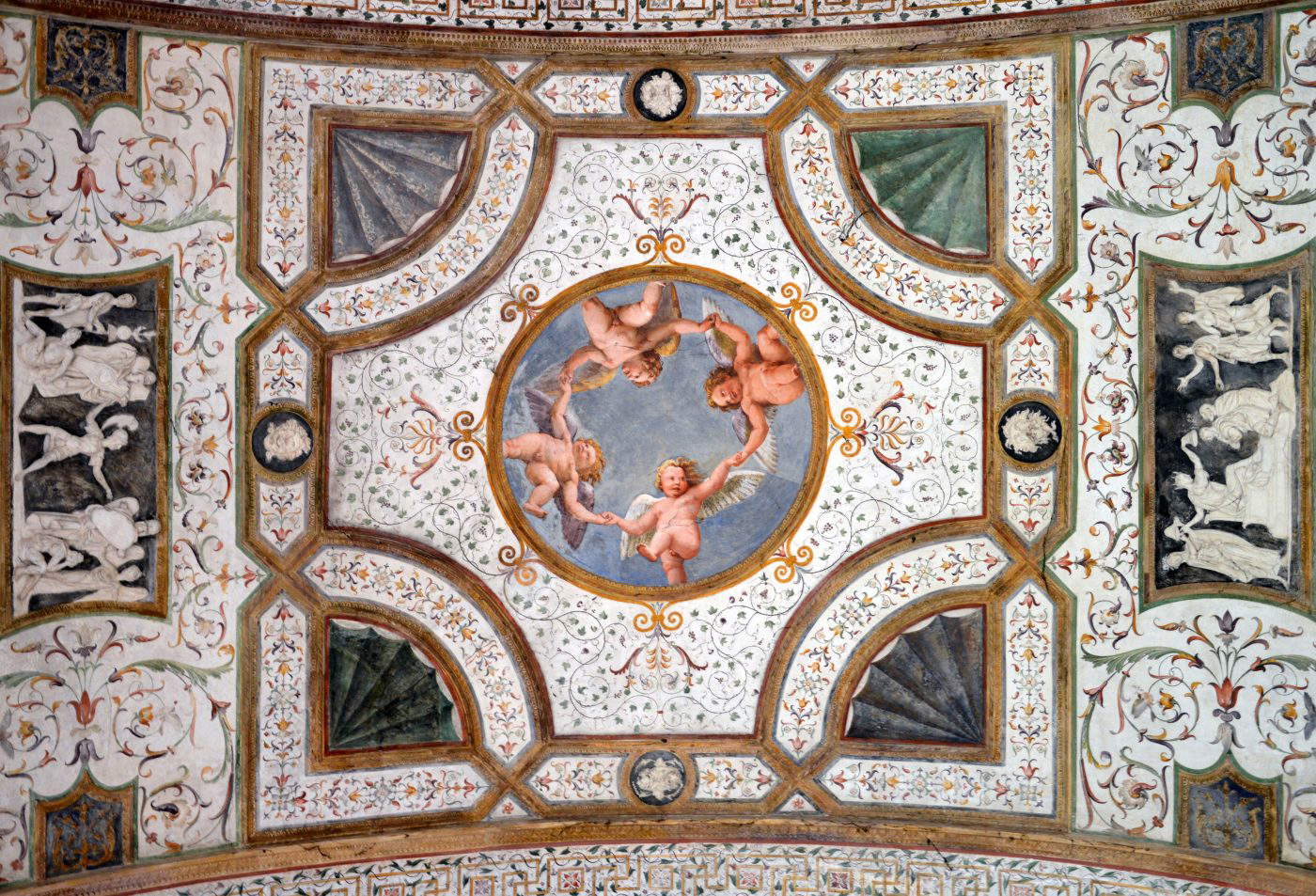
5. The Zodiac. Frescoes Creation Room of Palazzo Besta (Teglio).
In Teglio, in the province of Sondrio, stands Palazzo Besta, among the most important historical palaces in Valtellina, as well as the most beautiful Renaissance residence in the area, so much so that it is considered the “little palace in the Alps.” It was built starting in the second half of the 15th century at the behest of Azzo I Besta, but upon his death it was his son Azzo II and his wife Agnese Quadrio who were responsible for commissioning the pictorial decoration of the building, transforming it into a Renaissance court frequented by artists, men of letters and philosophers. Indeed, the palace features rooms entirely decorated with pictorial cycles, most notably the Creation Room on the second floor, depicting stories from Genesis. It is, however, on the vault that the wonder opens up to our eyes: the Besta family was very fond of geography, cartography and astrology, so much so that next to the Creation scene is a huge planisphere showing the known world in the mid-sixteenth century, and above the fireplace are depicted the two hemispheres with zodiac signs and constellations. According to Western astrology, the creatures of the signs of the Zodiac that we all know are twelve like the months of the year, and each zodiac sign refers to a constellation placed along the plane of the ecliptic.
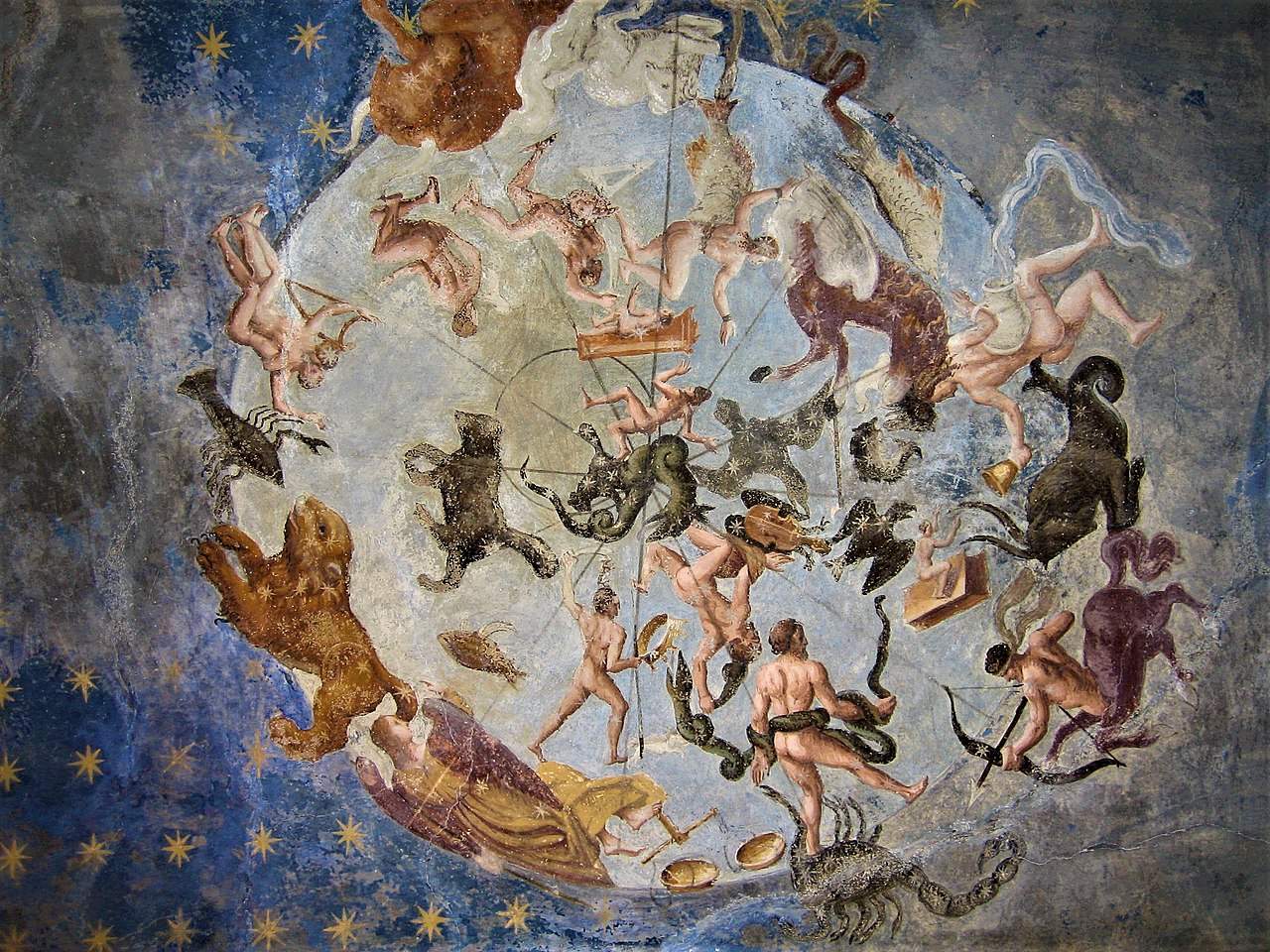
6. Satyrs and fantastic animals. Studiolo della Certosa (Pavia)
Inside Pavia’s Ducal Palace, the summer residence of the Visconti-Sforza family, is housed the Carthusian Monastery Museum, which is spread over two floors. If on the ground floor is set up the Gipsoteca and on the second floor extends the Pinacoteca and the sculptural collection, it is in the Studiolo located also on the second floor that it is possible to admire a wonderful Renaissance interior all frescoed and decorated. The author of the pictorial cycle is unknown: the frescoes on the walls depict colorful landscapes punctuated by monumental snake-legged monsters, called telamons, who in mannerist poses support the weight of the lintel on their heads. Instead, grotesques on a white background appear on the vault, surrounding the scene of Constantine’s Dream. Executed with quick brushstrokes, the grotesques include figures of nymphs and satyrs, masks, armillary spheres, and European and exotic animals, which would seem similar to some of Aurelio Luini’s decorations. The bas-reliefs in the lunettes depict stories of kings, emperors and saints united by the common denominator of the relationship between political power and religious life, exemplified by episodes of punished pride and glorifications of humility and the solitary life.
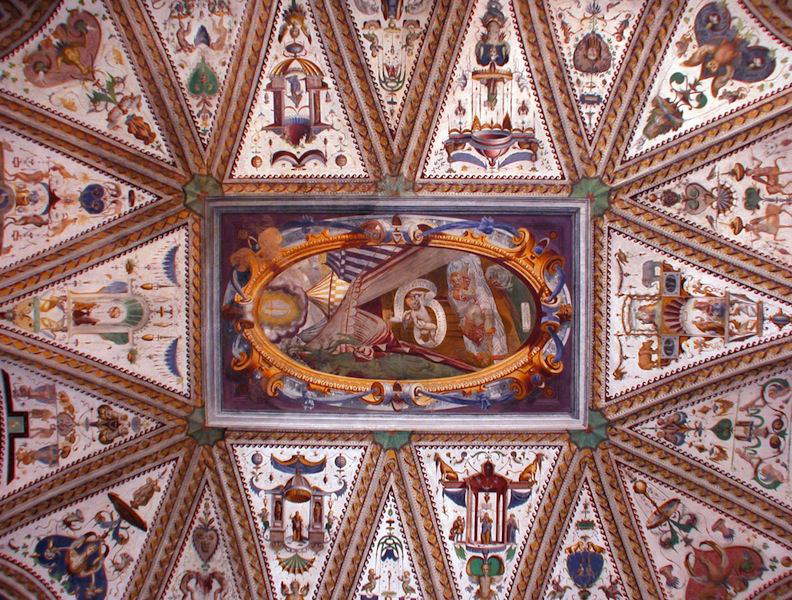
7. Real and fantastic animals. Mosaics of the Roman Villa (Desenzano del Garda).
The remains of the Roman Villa at Desenzano del Garda were found between 1921 and 1923 and constitute the most important archaeological evidence of the great late antique villae in northern Italy. Datable between the end of the 1st century B.C. and and the 5th century A.D., the villa was located just north of the Via Gallica, which connected the ancient cities of Bergamo, Brescia and Verona, thus in a favorable environmental and landscape position. In ancient times the villa directly overlooked the water, and it is possible that the owner of this mansion was Flavius Magnus Decentius, brother of the emperor Magnentius. During excavations, more than 240 square meters of polychrome mosaics were found, which are still in good condition and depict scenes with maenads and satyrs, beasts attacking wild animals, allegories of spring and summer, and cupids weaving garlands and festoons of fruit, cupids harvesting grapes or on chariots racing.
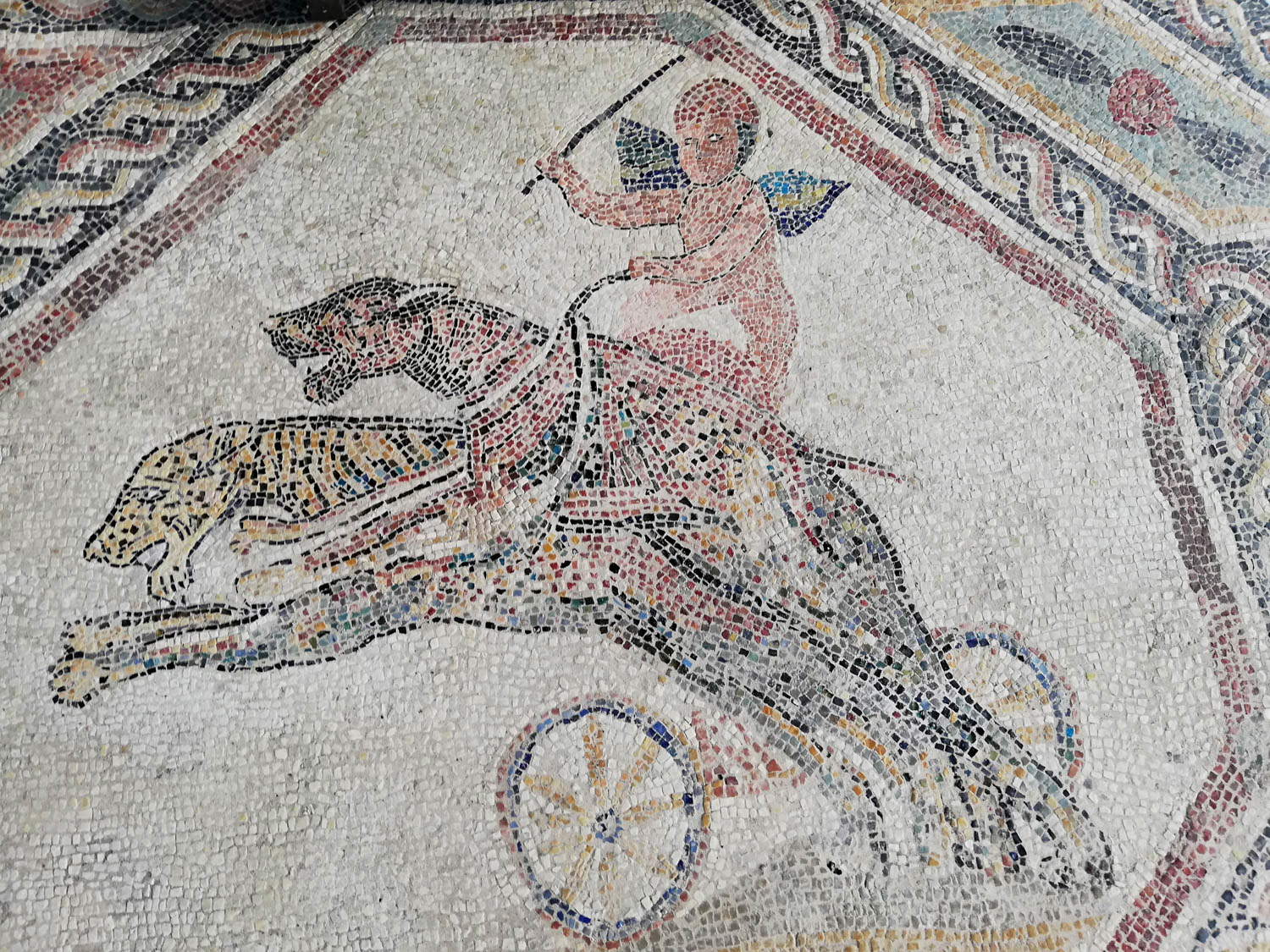
8. Doves of Venus. Balsamari from the National Archaeological Museum of Lomellina (Vigevano).
The spaces of the Sforzesco Castle in Vigevano house the National Archaeological Museum of Lomellina, which brings together archaeological artifacts belonging to various periods that have been found in the Lomellina territory in the Lombard province of Pavia. The museum was opened in 1998, expanded in 2006 with the addition of three rooms and in 2018 with the opening of the hall next to the stables. Among the most famous artifacts in the collection are the dove-shaped balsam jars, which have even become a symbol of the museum: elegant-looking and made of glass, they are frequent in funerary furnishings related to the female world, sometimes also characterized by bright colors that make them particularly popular with visitors even today. They were used as containers for liquids, such as perfumes, ointments and balms. Of course, doves are not fantastic animals, but how can we not remember their connection to the goddess Venus? The dove, a symbol of love, was her sacred animal. Also frequent are decorative terracotta appliqués of funerary beds in the shape of animals, including protomes of lions, horses and mules, as well as griffins and waders, harking back to the funerary symbologies of the Dionysian cult. Also present are clay figurines depicting animals such as cockerels, doves, mules and donkeys, recalling the pastoral world and daily life in this area.
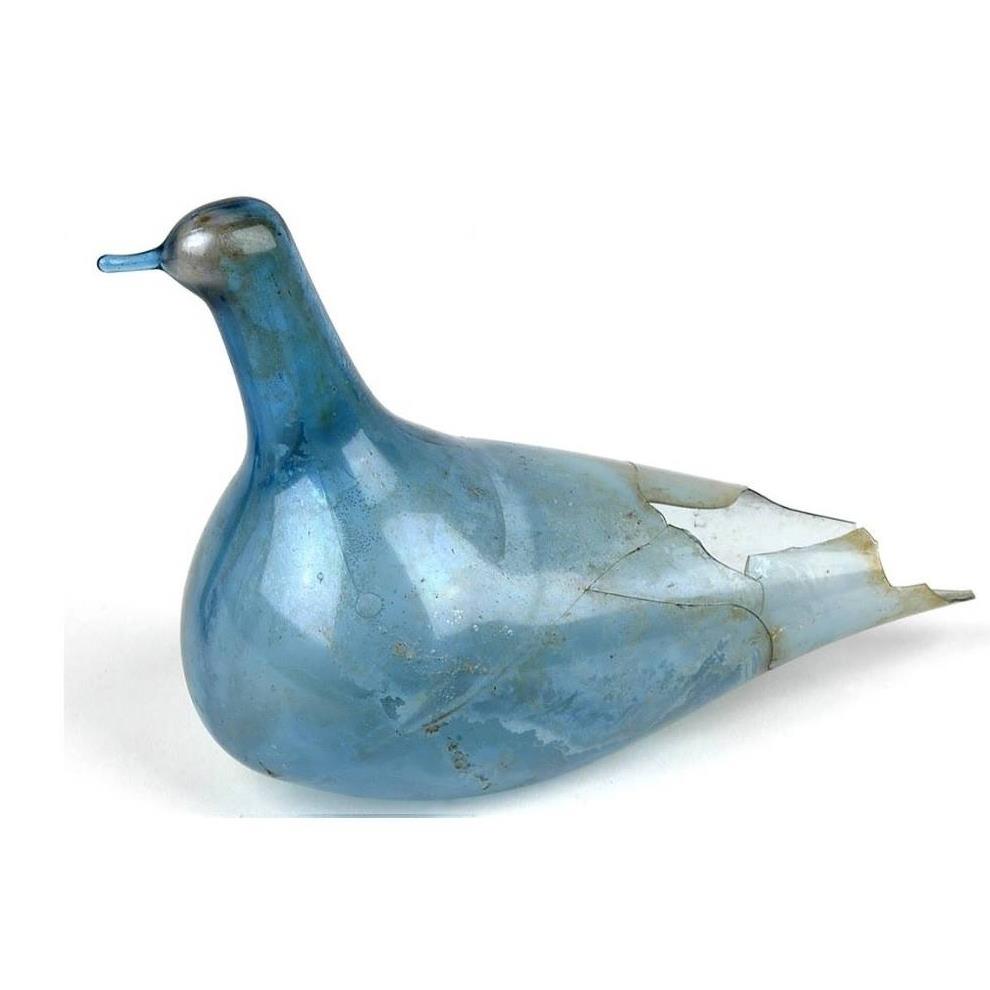
9. Minotaur. Amphora with Theseus and the Minotaur, Museo Civico Archeologico (Milan).
Among the finest and most significant pieces in the Civic Archaeological Museum in Milan is the amphora on which is depicted the mythological scene of Theseus fighting the minotaur, a famous feat of courage and strength performed by the hero before he became king of Athens. According to the myth, the king of Knossos, Minos, obliged Athens to send every nine years for food to the Minotaur, a brutal monster who had the body of a man and the head of a bull that lived locked up in the Labyrinth specially built by Daedalus, seven boys and seven girls. Among these seven maidens, came Theseus, a brave young man who managed to defeat the terrible monster in Crete with the help of Ariadne, daughter of King Minos who had fallen madly in love with him: in fact, the maiden gave Theseus a ball of wool so that he could trace the path he traveled in the labyrinth and get out with ease. Once the minotaur was defeated, Theseus exited the labyrinth and Ariadne fled with him to Athens, but then abandoned her on the island of Naxos. The large central panel on the belly of the amphora depicts a fight scene between two female figures, one of whom is probably Ariadne. The find is on display in the museum’s Greek section and dates to the third quarter of the 6th century B.C.; it was made using the technique known as “black-figure” painting.
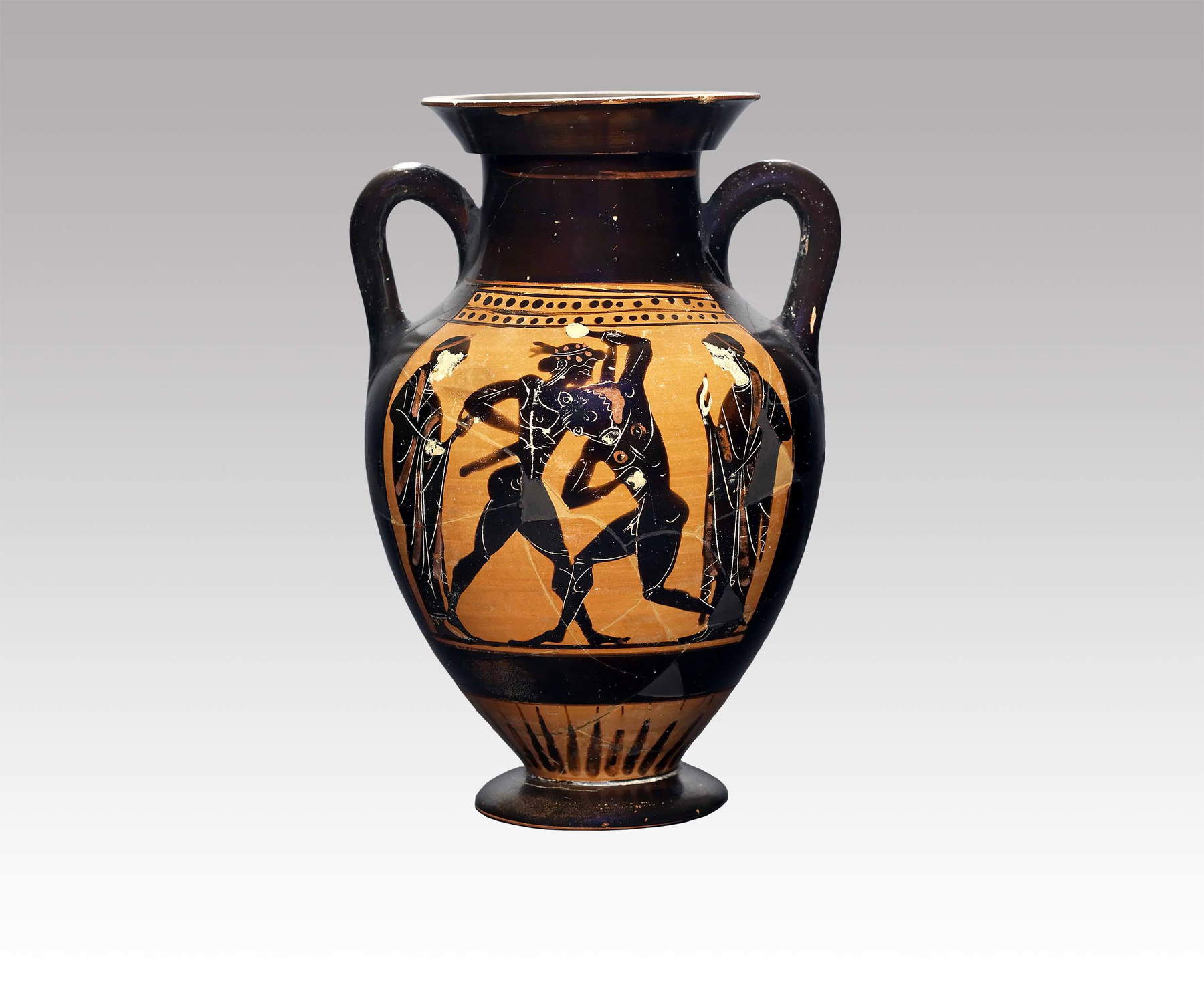
10. Giants. Room of the Giants at Palazzo Te (Mantua).
The Room of the Giants at Palazzo Te in Mantua is one of the most evocative and spectacular rooms that the mind of an artist could have created: in fact, Giulio Romano created, between 1532 and 1535, inside the leisure and pleasure residence of the Marquis of Mantua Federico II Gonzaga, a room in which architectural limits are totally eliminated through painting. He smoothed out the corners of the walls and the vault and created a floor, no longer visible today, formed by a mosaic of river pebbles that gave a unified character to the entire completely frescoed room. A highly illusionistic environment in which the visitor finds himself completely immersed, participating in the event taking place, namely the Fall of the Giants. The story taken from Ovid’s Metamorphoses is realized here starting from the vault, in which a whirlwind of clouds envelops the sky to defeat and take revenge on the giants who had attempted to assault, unsuccessfully, Olympus. The divine vengeance then comes upon the giants as they fall and are crushed by the weight of great boulders of the fallen buildings, are swept down the mountain, run over by rushing streams of water. It is Jupiter, supreme deity, who by hurling thunderbolts, assisted by Juno and the immortals, punishes the rebellious giants who dared to defy him.
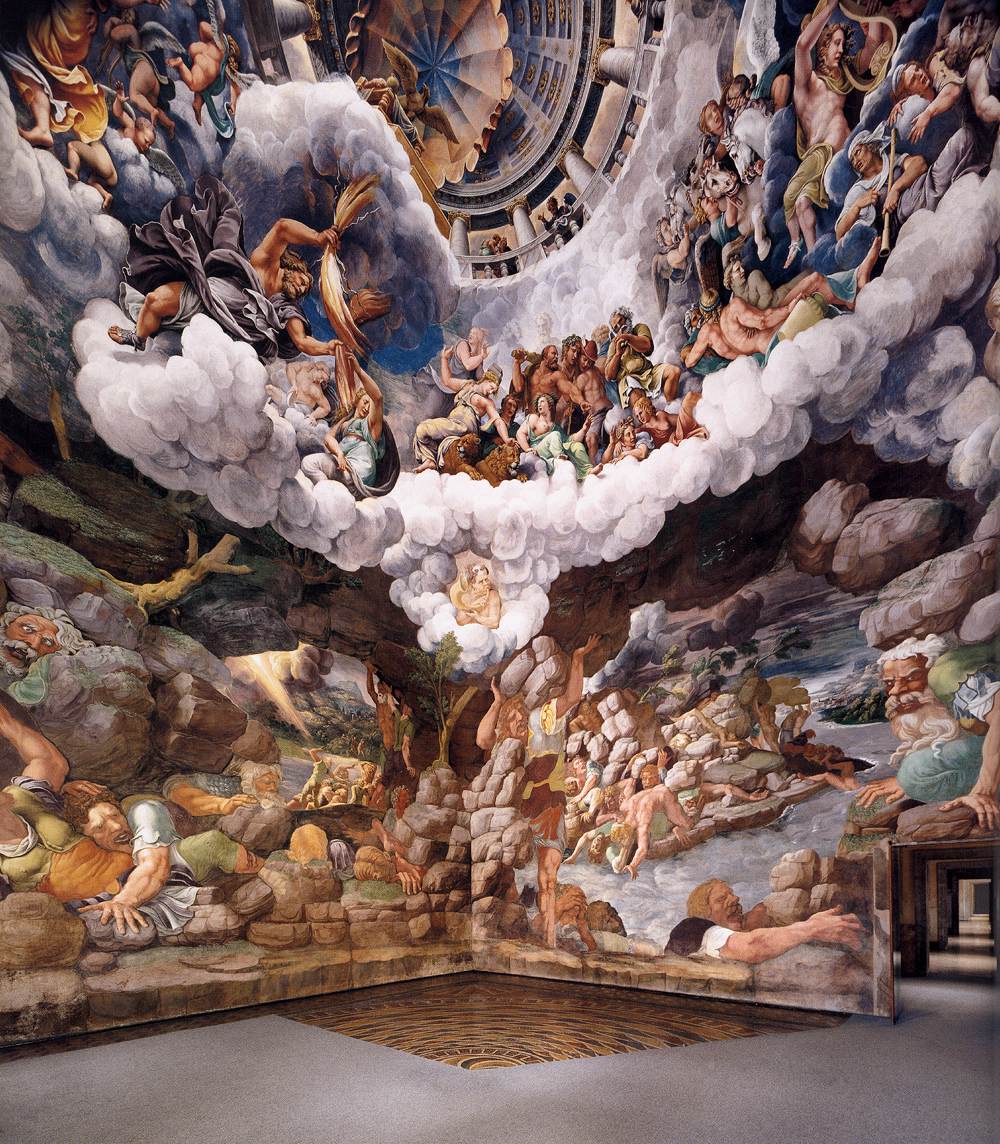
 |
| Animals and fantastic places in the museums of Italy: Lombardy |
Warning: the translation into English of the original Italian article was created using automatic tools. We undertake to review all articles, but we do not guarantee the total absence of inaccuracies in the translation due to the program. You can find the original by clicking on the ITA button. If you find any mistake,please contact us.



























